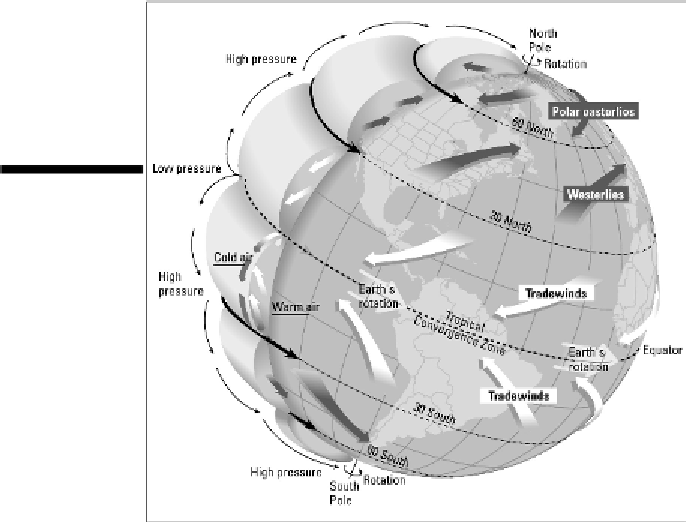Geography Reference
In-Depth Information
Figure 9-10:
Inter-tropical
conver- gence
zone and sub-
tropical high-
pressure belts.
Monsoons
Now you know how and why the sun's vertical rays migrate north and south of the equator during
the year. (You may wish to refer back to “Tilt-a-World: The Reasons for the Seasons,” earlier in this
chapter.) Because the equatorial low-pressure belt is a product of those very same rays, it migrates
as well, and so do the related subtropical highs. During the year, therefore, tropical latitudes may be
alternately dominated by the low-pressure belt, which brings a rainy season, and one of the high-pres-
sure belts, which brings a dry season.
Wet season-dry season transitions happen in many parts of the tropical world, the most well-known
example being the
monsoons
of South Asia. As the vertical rays move northward during summer, the
low-pressure belt moves with it, drawing moisture-laden air from the Indian Ocean and producing a
pronounced rainy season. During winter, the ITCZ moves south of the equator. At that time the sub-
tropical high pressure belt moves over south Asia and surface winds blow from the interior of the
continent to the Indian Ocean, resulting in a relatively rainless period (see Figure 9-11).


